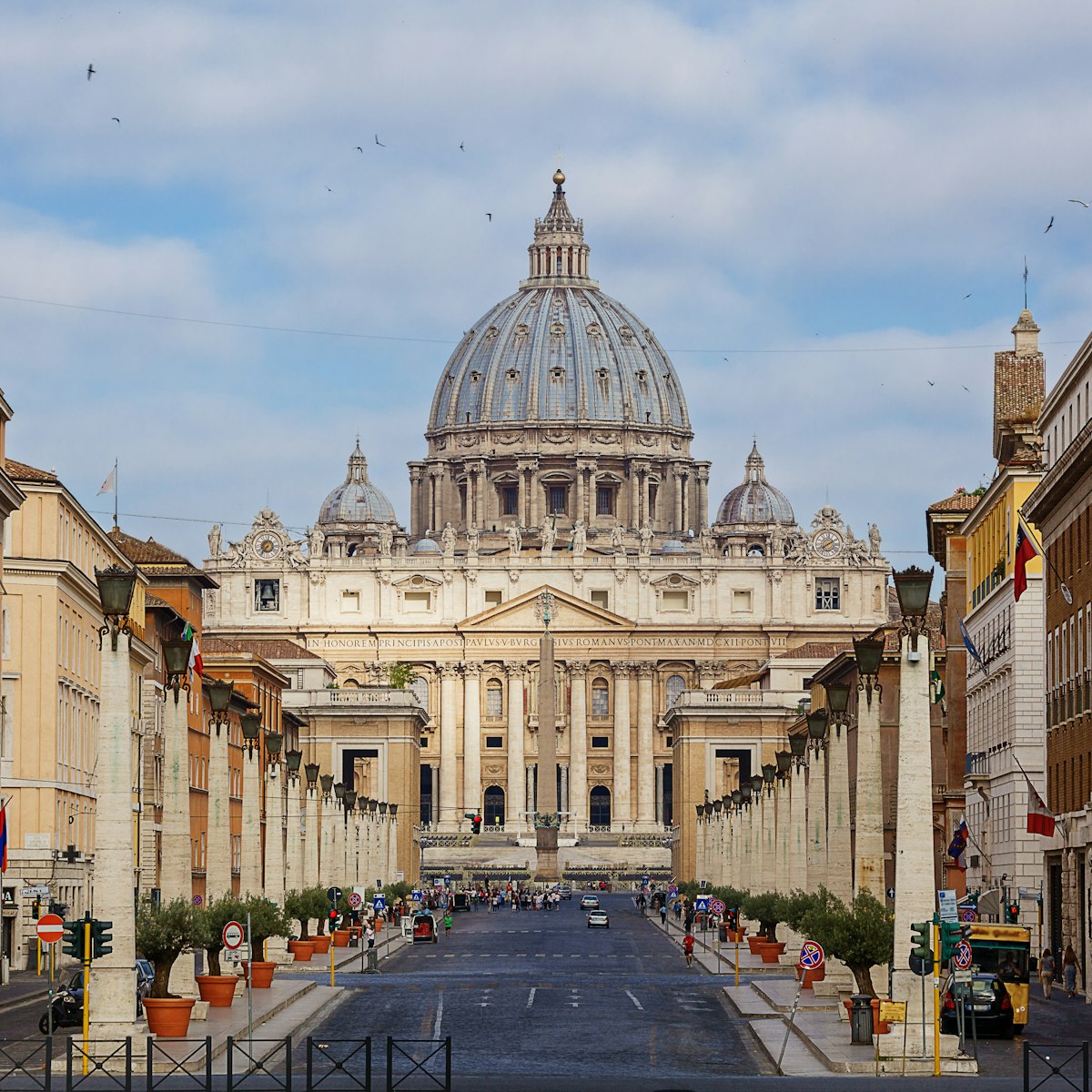A magnet for visitors since the 18th century, the Spanish Steps (Scalinata della Trinità dei Monti) provide a perfect place for people watching. The 135 gleaming steps rise from Piazza di Spagna to the landmark Chiesa della Trinità dei Monti.
Piazza di Spagna was named after the Spanish Embassy to the Holy See, although the staircase, designed by the Italian Francesco de Sanctis, was built in 1725 with money bequeathed by a French diplomat.
In the late 1700s the area around the piazza was much loved by English visitors on the Grand Tour and was known to locals as the ghetto de l’inglesi (the English ghetto).
At the top of the steps, the Chiesa della Trinità dei Monti is notable for the great views over Rome offered from its front staircase, and for its impressive frescoes by Daniele da Volterra.
Down on the piazza, you'll find the Baroque Barcaccia, the "sinking boat" fountain built by Pietro Bernini – the father of legendary artist Gian Lorenzo Bernini – in the 1620s.
To the southeast, adjacent Piazza Mignanelli is dominated by the Colonna dell’Immacolata, built in 1857 to celebrate Pope Pius IX’s declaration of the Immaculate Conception.
Rules: don't sit down!
A new law introduced in 2019 prohibits people from sitting on the Spanish Steps to protect the monumental staircase from being damaged. While you are unlikely to be fined – official penalties can reach €400 – the police will ask you to stand up if you are found enjoying the comfort of the step’s sunkissed travertine.









